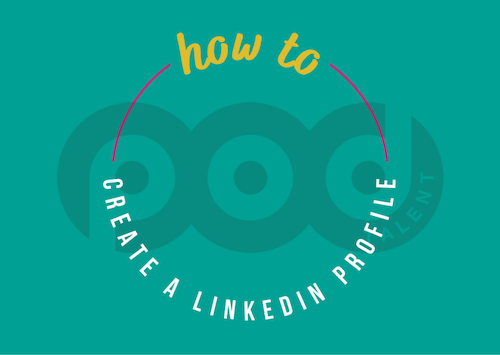LinkedIn is a fantastic tool to use while searching for a job, and once in a role, to enhance your career and improve your professional network. However, I know that I personally had no idea how to use LinkedIn properly; what my profile should look like, who to connect with and ultimately how to use it to help me find a job. It wasn’t until I started in recruitment that I learnt just how useful LinkedIn can be, and so hopefully we can help you to start using LinkedIn to your advantage.
The first step to LinkedIn is creating a strong LinkedIn profile. Anyone can create a LinkedIn profile, but if you’ve got 3 connections and no profile photo, you might as well not have LinkedIn! This article, the first in a series on the basics of searching for a new role, will focus on exactly how to set up a LinkedIn profile that will get you noticed, and then how to use this profile to start building your network!
-
Photo – It’s a well known statistic that profiles with photos get 14x more views. You need a LinkedIn photo if you’re going to use LinkedIn effectively – make sure you keep it professional! LinkedIn have recently introduced a #opentowork filter you can put on your photos which, if you’re actively looking, is useful to have.
-
Headline – This is important, and often overlooked. You want to explain who you are and what you’re looking for in about 8 words. For me, I’d have put “International Relations Graduate searching for Recruitment Graduate Roles”. Keep it short, keep it to the point.
-
Summary – This is where you can elaborate a little bit more on what you’ve done, and what you’re looking for. Keep it relatively brief, but make sure you include any key skills and words that can show up in searches!
-
Experience – This is where the lines start to get a bit blurrier and it becomes a bit more challenging. Should you include the time you worked as a lifeguard one summer? Is being social secretary of your university society a position to put under experience? Should you put those three week internships and placements? Be smart with your experience. Be selective about what you post, and only post things that are going to be relevant to a hiring manager viewing your profile for the roles you’re looking for. You can use the volunteering section and the education section to write about university societies and extra-curricular activities! Be sure to outline what you’ve done at each role and key learning points and achievements.
-
Skills – Add any relevant skills you have onto your profile. These help with getting noticed in searches and can help people know a bit more about you and what you can do! Be sure to add any additional languages you speak fluently – not the first level on Duolingo!
-
Education – You’ll want to keep it simple here. I personally recommend Sixth Form/College, then your university, course and final grade. If you were close to the grade above (e.g. 69%, 2:1 final grade) feel free to put the percentage. There’s a section for Activities and Societies which is great for adding in any extra-curricular participation.
-
Recommendations – Recommendations are a really strong addition to your profile. I see a lot of new profiles with recommendations from friends, which can cheapen any real reviews and recommendations you get in the future. Therefore, I’d recommend keeping it to real recommendations only – reach out to previous employers, lecturers etc!
-
CV – You’re able to upload your CV to LinkedIn. If you’re actively looking for a new role, it’s well worth doing as it allows recruiters to quickly find out a bit more about you, and gives your contact details.
You’re done! Now you can start using LinkedIn to help you with your job search and your career. Get out there and start looking for any relevant people to help your job search. Watch this space for a new article next week on exactly how to use LinkedIn, so go connect with me and keep an eye out if you’re interested!
And lastly, if you’re interested in a career in Supply Chain, you’re in the right place already. Get in touch, let’s have a chat.

